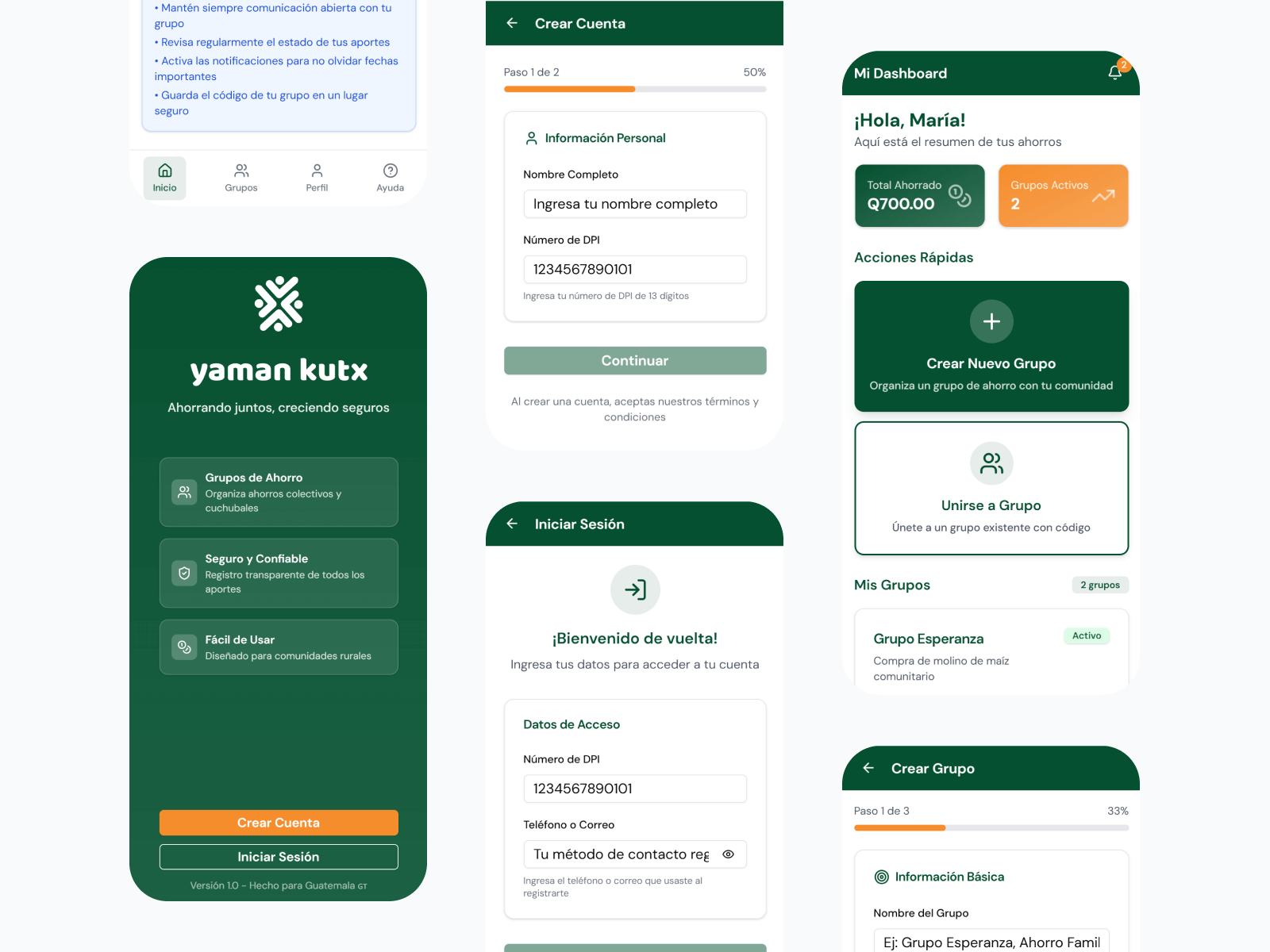Yaman Kutx
This project was created mostly using AI (ChatGPT, Otter, Ideogram, Stitch, Lovable, Bolt & Polymet)
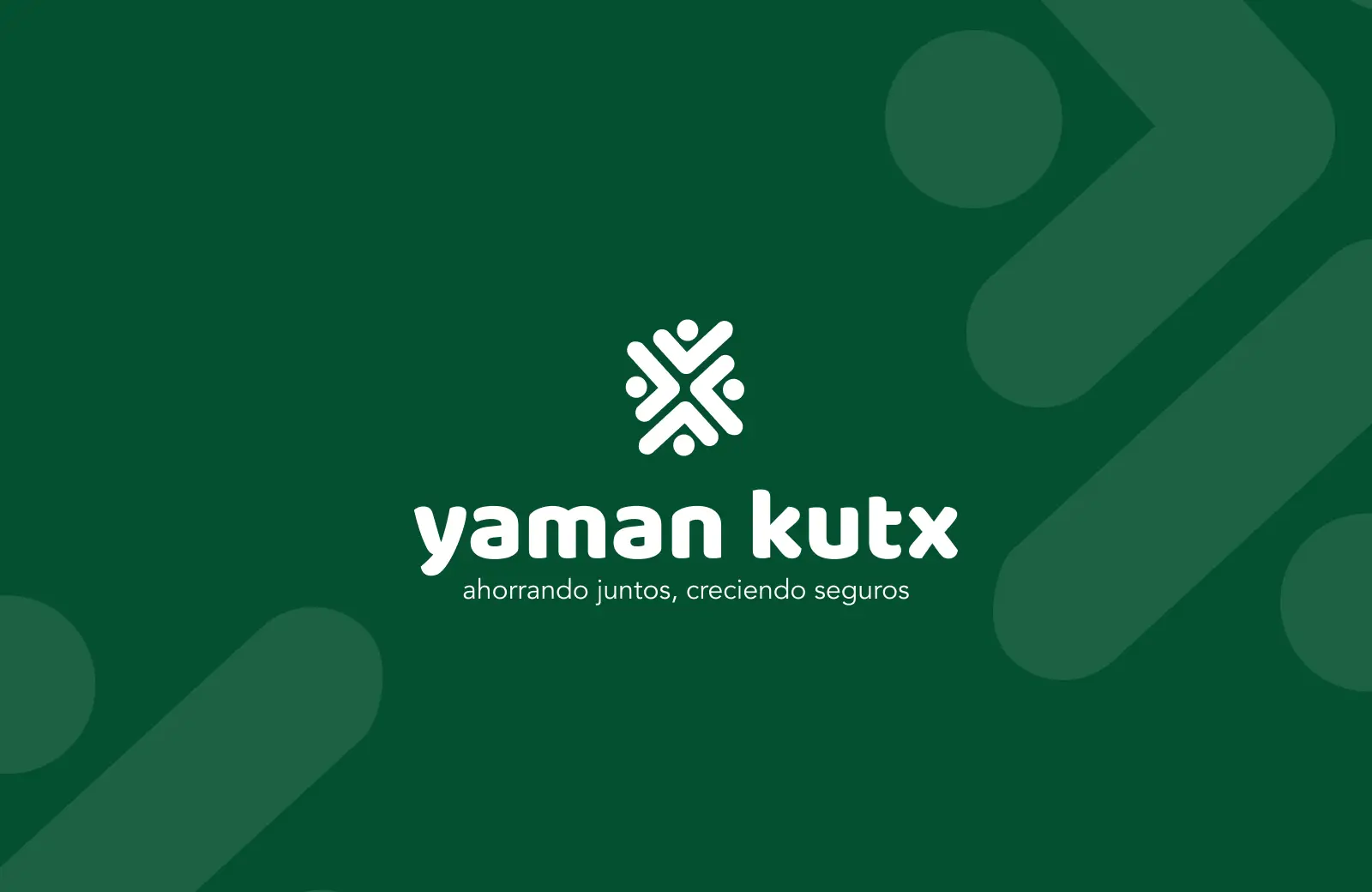
Role
UX Research / AI Designer
Duration
4 Days
Year
2025
Yaman Kutx
Set of financial contributions, in Popti’ – Jakalteko. It’s a mobile application developed to facilitate collaborative savings in rural and semi-urban communities of Huehuetenango. Inspired by traditional “cooperachas” or “cuchubales,” the app aims to digitize these savings dynamics without losing their communal essence. Through a simple and accessible interface, Yaman Kutx enables users to organize, manage, and participate in savings groups in a clear, secure, and transparent way.
Overview
We empower unbanked individuals and those with low digital literacy to actively organize and participate in their local mutual aid groups (a term used in Jacaltenango communities). The app provides tools to create new groups, define the rules of the system, invite members, manage savings turns, and track contributions, all from a mobile phone. It also fosters trust by visually showing each user the status of their payments, the savings calendar, and the beneficiary rotation.
Background
In Guatemala, thousands of people regularly participate in informal collective savings systems. These models rely on mutual trust but face challenges such as calculation errors, forgotten contributions, disputes, and lack of transparency. Most of these initiatives are still recorded on paper. With the increasing access to smartphones, there’s a valuable opportunity to offer a digital tool that respects traditional community practices while enhancing their organization and reliability.
What has been covered?
- User research and sociocultural context analysis
- Definition of user profiles and archetypes
- Information architecture and user flows
- Brief brand and visual identity exploration
- UI focused on clarity and accessibility
- Visual proposal for the product interface
- Strategic use of AI to enhance the experience
- Key success criteria and adoption metrics
Main Objective
Develop an accessible and reliable mobile application that enables rural and semi-urban communities in Guatemala to organize and manage collaborative savings groups digitally.
Specific Objectives
- Digitize the collective savings dynamic to reduce errors, omissions, and conflicts.
- Ensure a simple and intuitive experience for users with low digital literacy.
- Provide transparency regarding rules, turns, contributions, and beneficiaries.
- Build trust in digital financial systems.
Measuring Success (KPIs)
Quantitative KPIs
Downloads
Number of app downloads.
Retention
Monthly retention rate.
New Users
Number of registered users.
Conflicts
Number of reported errors.
New Groups
Number of groups created.
Time
Average time spent in the app.
Qualitative KPIs
Understanding
Users clearly grasp the benefit of the app.
Testimonials
Collected from social media and Google Play Store.
Trust
Users’ perceived control and confidence in their savings.
Satisfaction
Measured through in-app surveys.
Process Timeline
Day 1 and 2: Initial research and problem definition were conducted. Short interviews and benchmarking were carried out to identify main user archetypes and needs. With AI assistance, findings were synthesized and key flows were structured quickly and accurately.
Day 2 and 3: Product definition and ideation were expanded. Low-fidelity wireframes were created, and the information architecture was organized. AI was used to generate textual content, explore visual alternatives, and validate the clarity of proposed flows.
Day 3 and 4: The visual design of the interface took shape, defining the color palette, typography, and iconography. The high-fidelity, navigable prototype was consolidated, focusing on the main user flows. Strategic use of AI enabled the process to be completed efficiently, ensuring consistency, clarity, and coherence within the limited timeframe.
Anthropological Perspective from the Jakaltek Region
As part of the research process, a semi-structured interview was conducted with Lic. Juan José López, an anthropologist with over seven years of experience working in rural communities of Huehuetenango, particularly in Jacaltenango. He is currently pursuing a Ph.D. in Anthropology and has worked on topics related to development, migration, and transparency. His deep understanding of the local context helped identify key needs, behaviors, and barriers related to collective savings groups in unbanked areas.
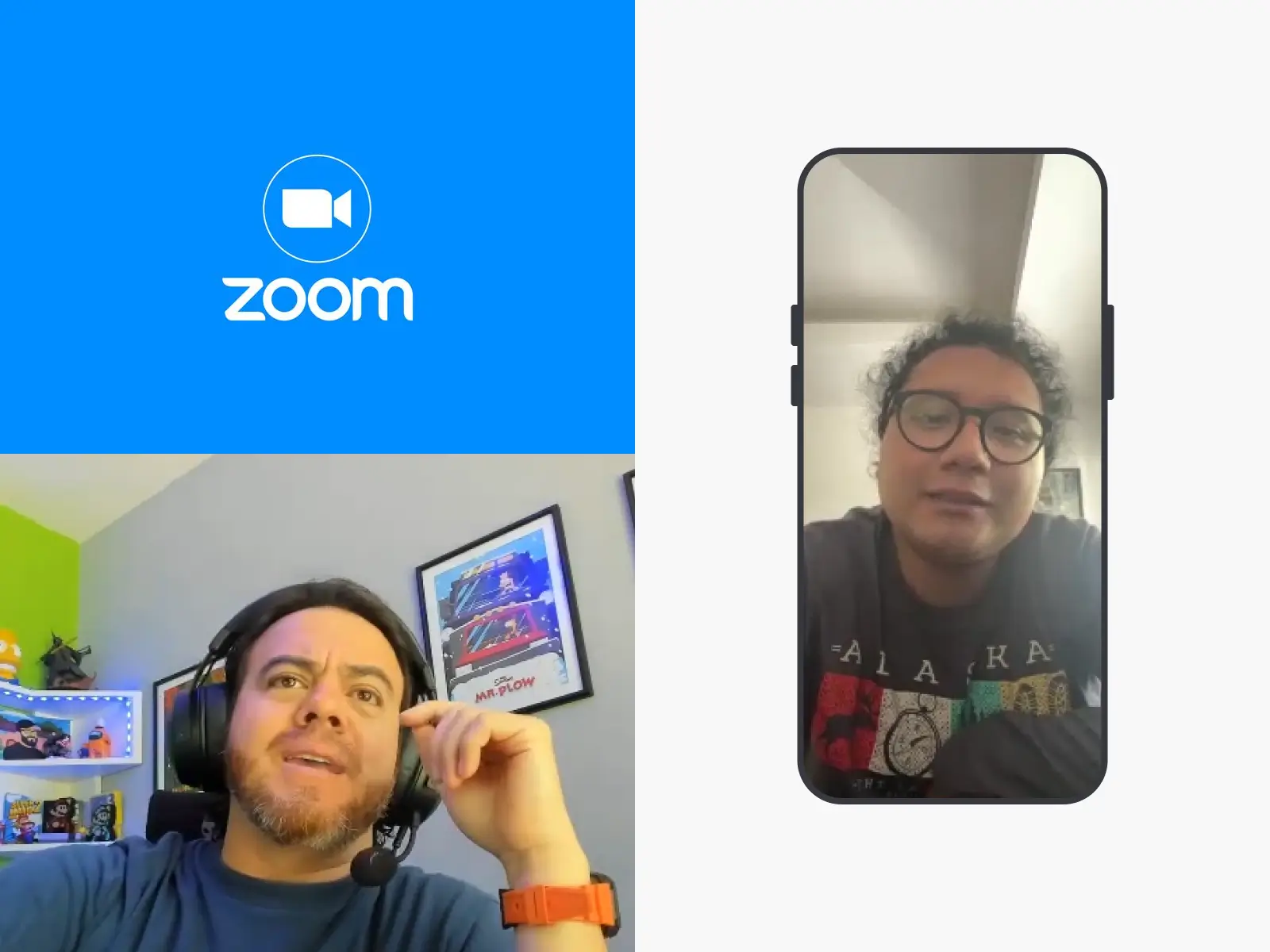
Findings
- Collective trust is fundamental
When transparency is shared among all members, trust remains strong, even without technology. - Community leadership drives organization
Natural leaders (such as COCODEs, teachers, or health promoters) play a key role in organizing contributions and could be essential for app adoption. - Savings often occur in-kind or through infrastructure
Funds are commonly invested in community projects (e.g., water systems, roads) rather than individual savings. - Women are typically the ones making the contributions
Often, they do so on behalf of relatives who have migrated abroad and send money home. - Openness exists, but so does fear of digital tools
If the app proves clear, helpful, and trustworthy, it may be adopted, but it must feel like a community-owned tool, not an institutional imposition.
Pain Points
Lack of financial access
Most users do not have access to formal banking services.
Digital divide
Many users do not use banking apps and distrust digital tools due to lack of familiarity.
Fragile manual records
Contributions are tracked on paper, leading to errors, losses, or confusion.
Perceived rigidity of formal tools
Users prefer flexible systems; overly structured tools often cause rejection.
Limited familiarity with financial apps
While WhatsApp and Facebook are commonly used, financial tools remain unfamiliar.
User Needs
1.
Have a clear and reliable record of contributions and agreements.
2.
Manage groups in a simple and understandable way.
3.
Integrate the app into existing community dynamics.
4.
Access a digital tool that is easy to use.
5.
Feel confident that digital systems are secure and trustworthy.
Why are we doing this?
Thousands of people in Guatemala and across Latin America use informal systems to manage money collectively. However, these methods are prone to human error, lack transparency, and often lead to disputes. Digitalization can improve the experience while preserving its communal essence.
Problem Statement
🚨
The Problem
Collective savings groups are managed manually, leading to errors and distrust.
🌎
Context
Thousands of people in Guatemala depend on these savings groups without access to digital tools.
Audience
Yaman Kutx is designed for individuals from rural and semi-urban communities in Jacaltenango, Huehuetenango who participate in collective savings groups, known locally as mutual aid. This audience typically has limited access to formal financial services and varying levels of digital literacy.
Target Users
Adults aged 25 to 60 from rural communities.
Limited or no access to formal banking services.
Community leaders, COCODE members, or small-group organizers.
Use low to mid-range Android devices.
Little experience with apps, but do own smartphones.
User Persona
Eduardo Silvestre
Coffee Farmer
"You don’t save because you have extra, you save because you know how hard it is to earn your daily bread."
Bio
Husband and father of three. He has worked at La Hortaliza coffee plantation since he was young. He knows every step of the coffee process.
Age: 47 years
Marital status: Married
Education: Basic
Personality traits:
Responsible
Hardworking
Respected
Practical
🎯 Goals / Needs:
An app that provides control, order, and peace of mind
A guided, step-by-step group creation flow with easy member invitation
A clear view of the group’s status and an easy way to send reminders
😣 Pain Points:
Keeping records on paper and being questioned for mistakes
Late payments from group members
Unannounced rule changes or unnotified absences
💪 Motivations:
Wants to be useful and help his community
Prefers to avoid misunderstandings or conflicts
Seeks to be trusted and seen as organized and reliable
📱 Digital Skills:
Uses WhatsApp and Facebook confidently
Can complete basic forms
Struggles with technical language or too many options
Information Architecture
1. Start
- Welcome screen
- User registration
- Log in
2. Home
- User overview
- View active groups
- Create a new group
- Join an existing group
- Access user profile
3. Create Group
- Create a new group
- Add members
- Group setup and purpose
- Direct access to the group dashboard
4. Join Group
- Enter code or scan QR
- View group details
- Accept participation
- Access the group dashboard
5. Group Dashboard
- Group overview
- View turns and contribution calendar
- Contribution history
- Group messages
- (Organizer only):
- Register contributions
- Edit group settings
6. Profile / Account
- View profile
- Account settings
- Notifications
- Help / FAQs
Sitemap
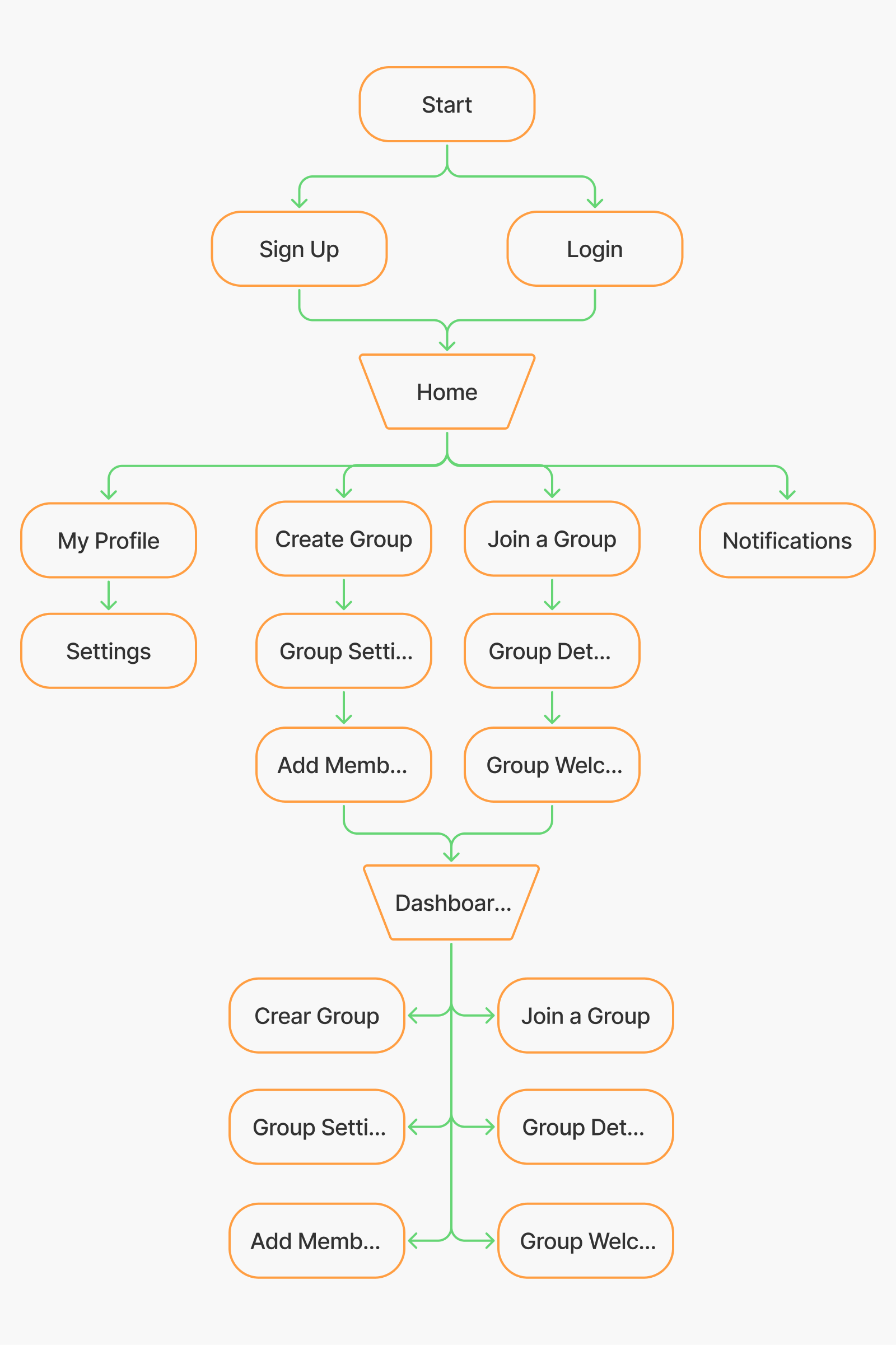
User Journey - Sign Up
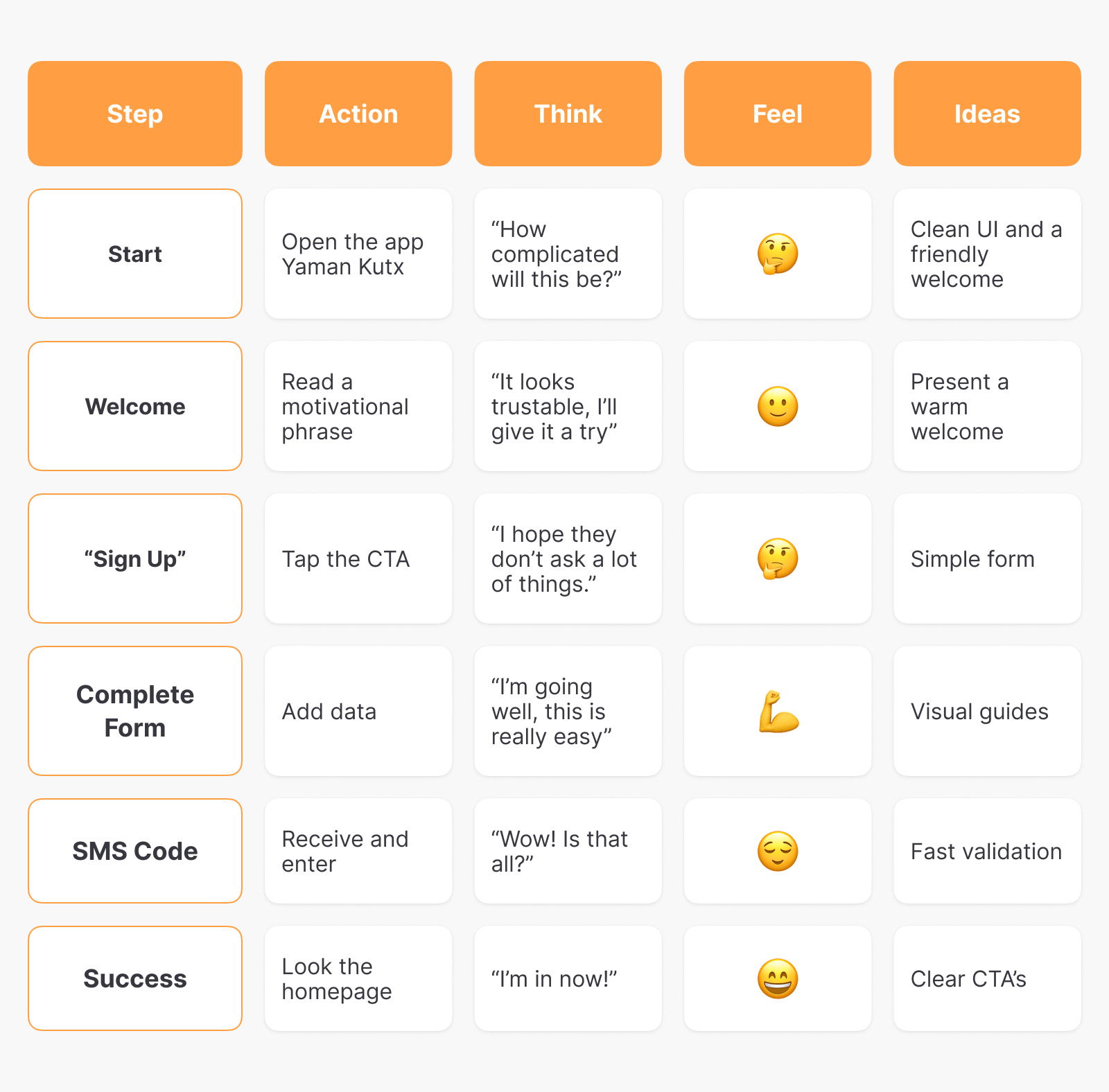
User Journey - Create New Group
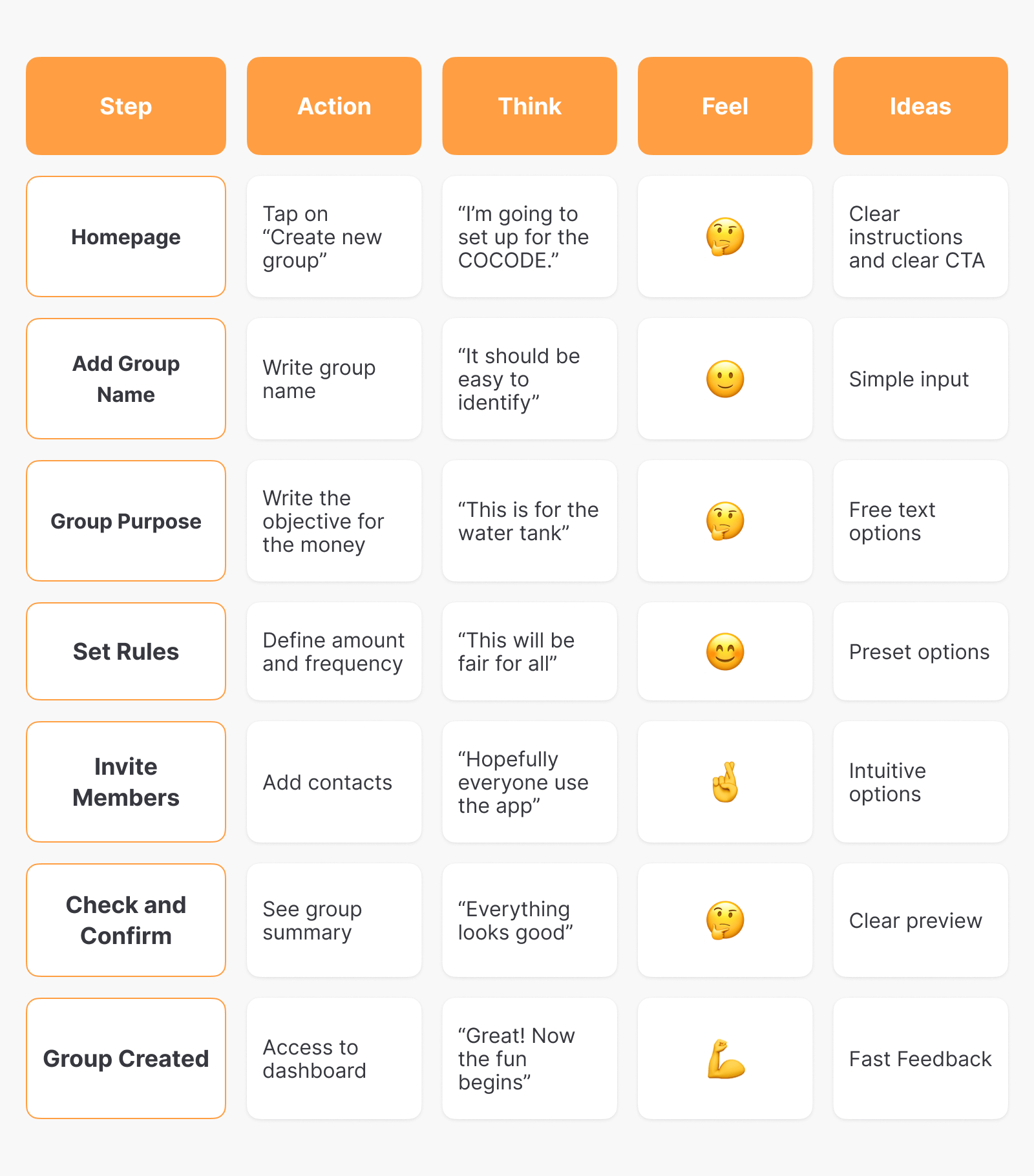
Visual Identity
Logo
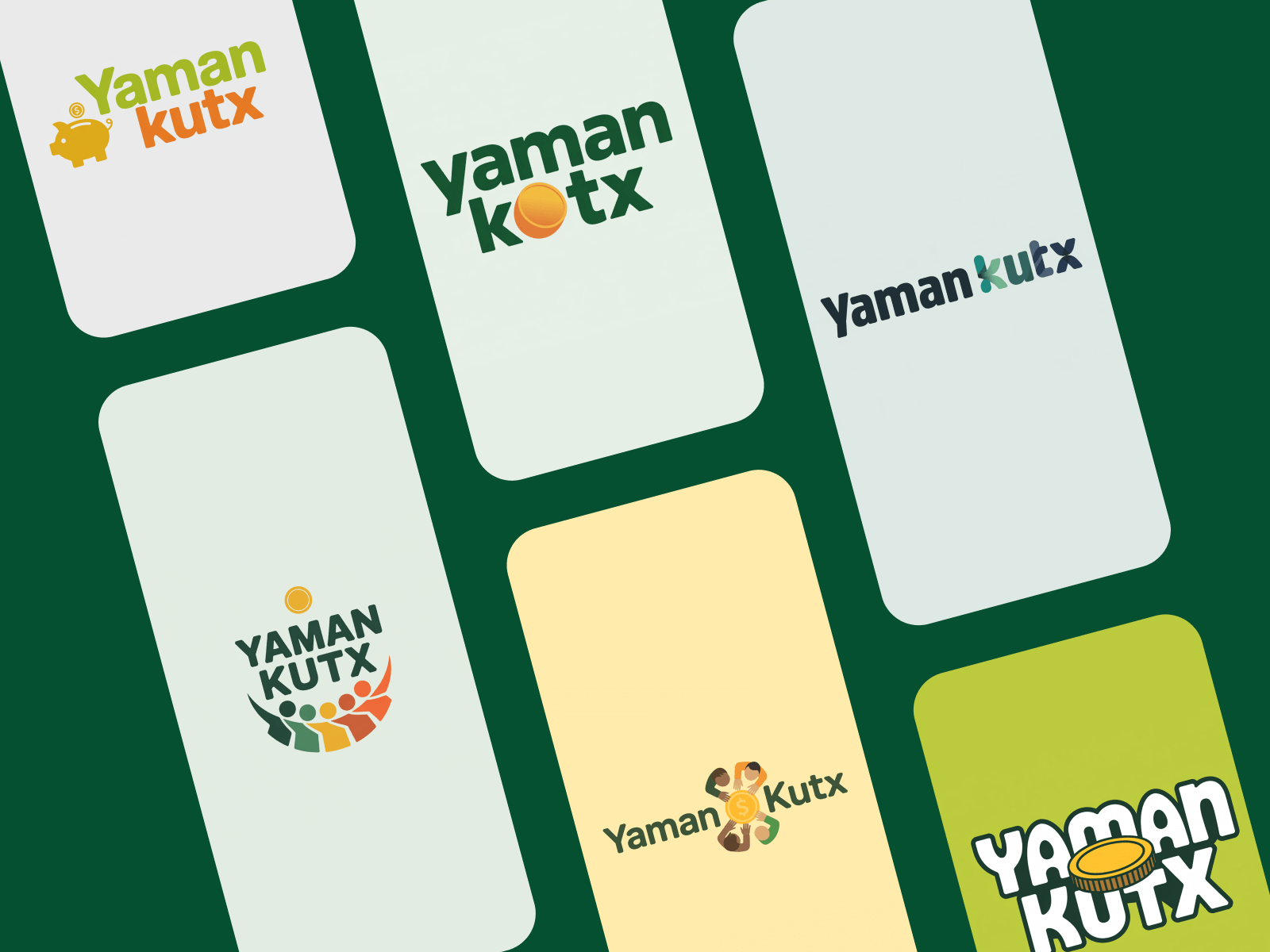
Color Palette
The palette combines warm and trustworthy tones that evoke earth, stability, and the collective energy of rural communities. These colors are meant to feel accessible and familiar while ensuring proper visual contrast for users with different levels of digital experience.
Typography
The project uses DM Sans as the only typeface to ensure consistency. Its modern and simple design enhances readability on small screens, especially for users with limited exposure to digital interfaces, without sacrificing a current and functional look.
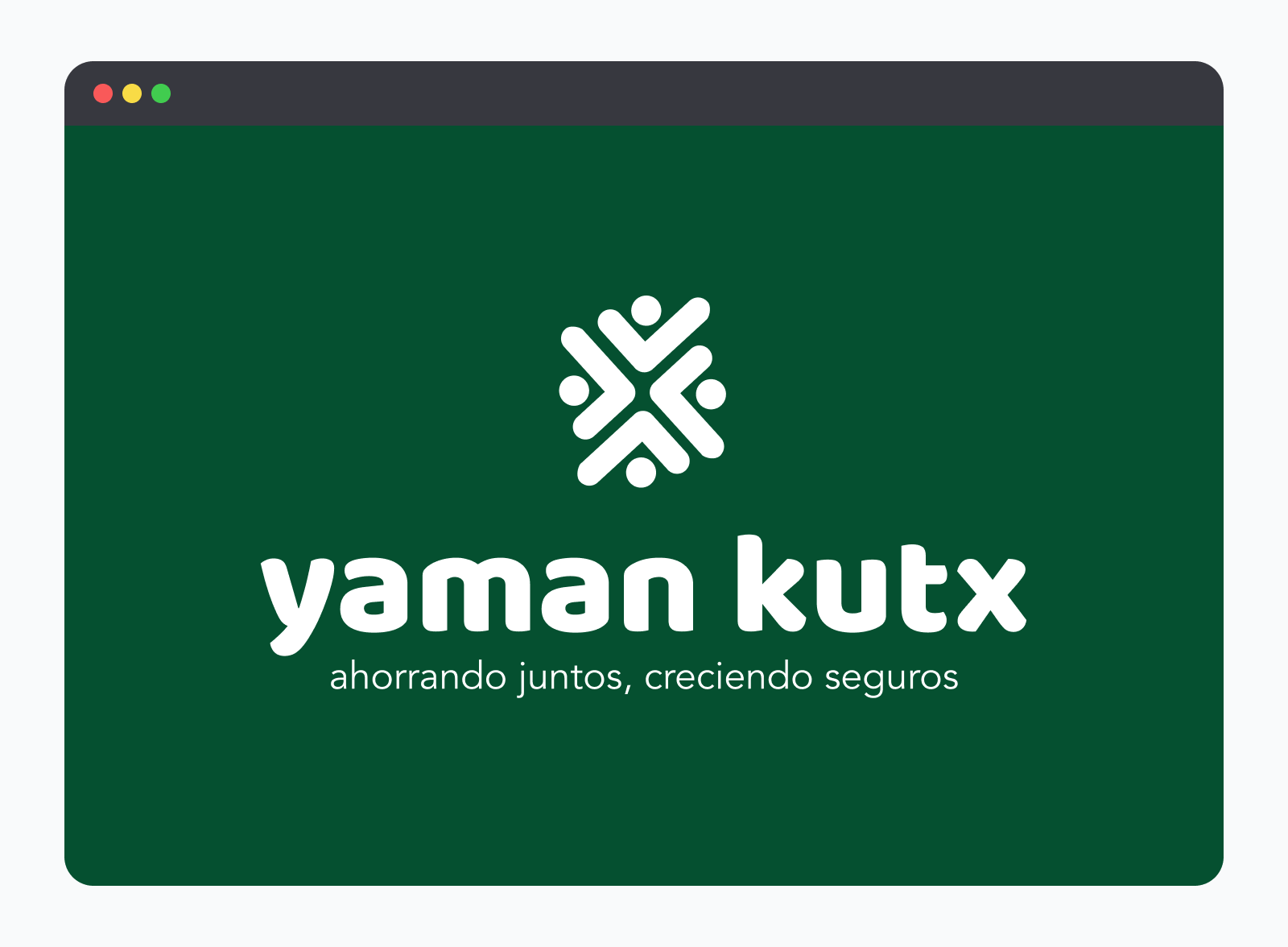
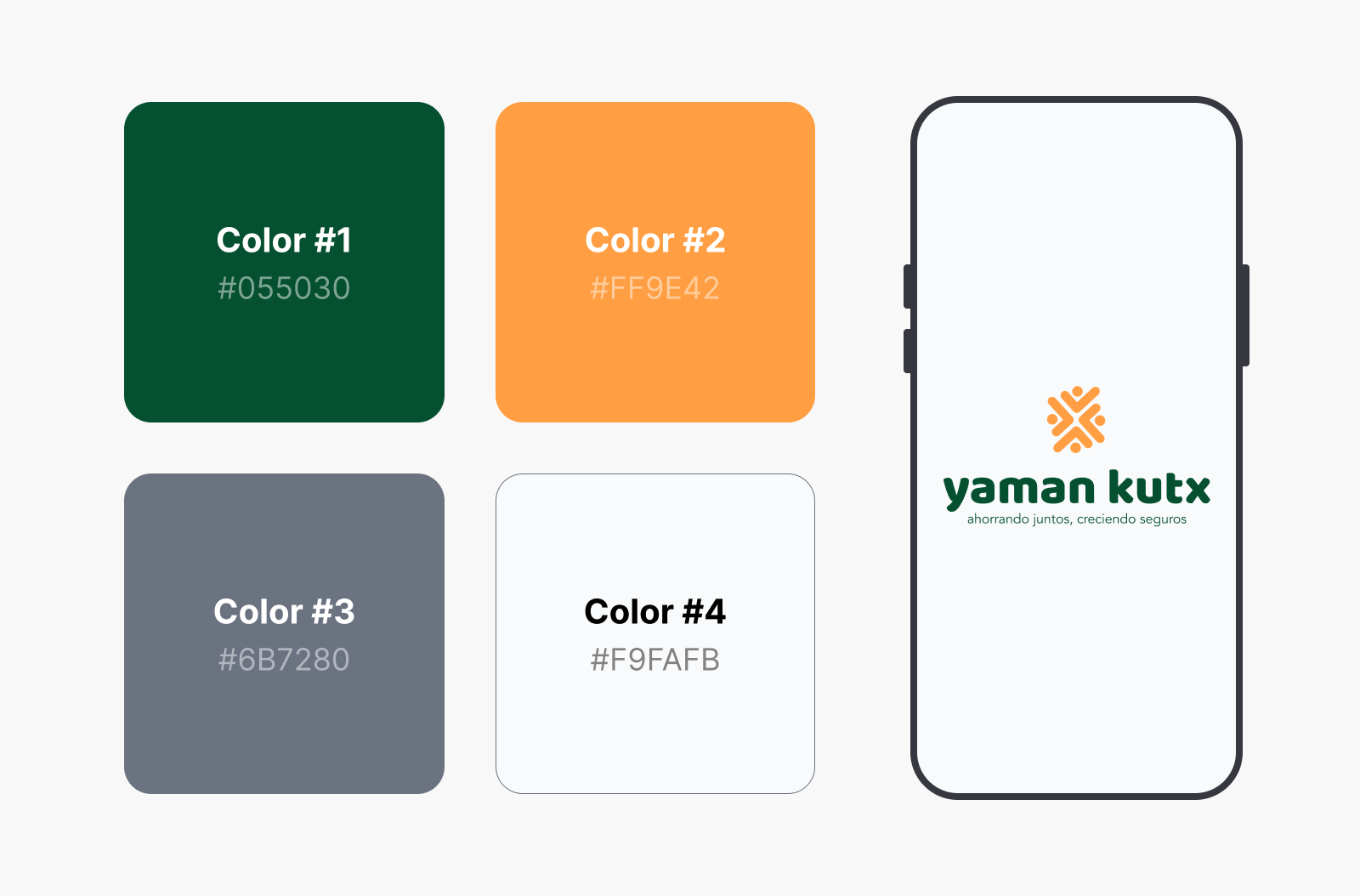
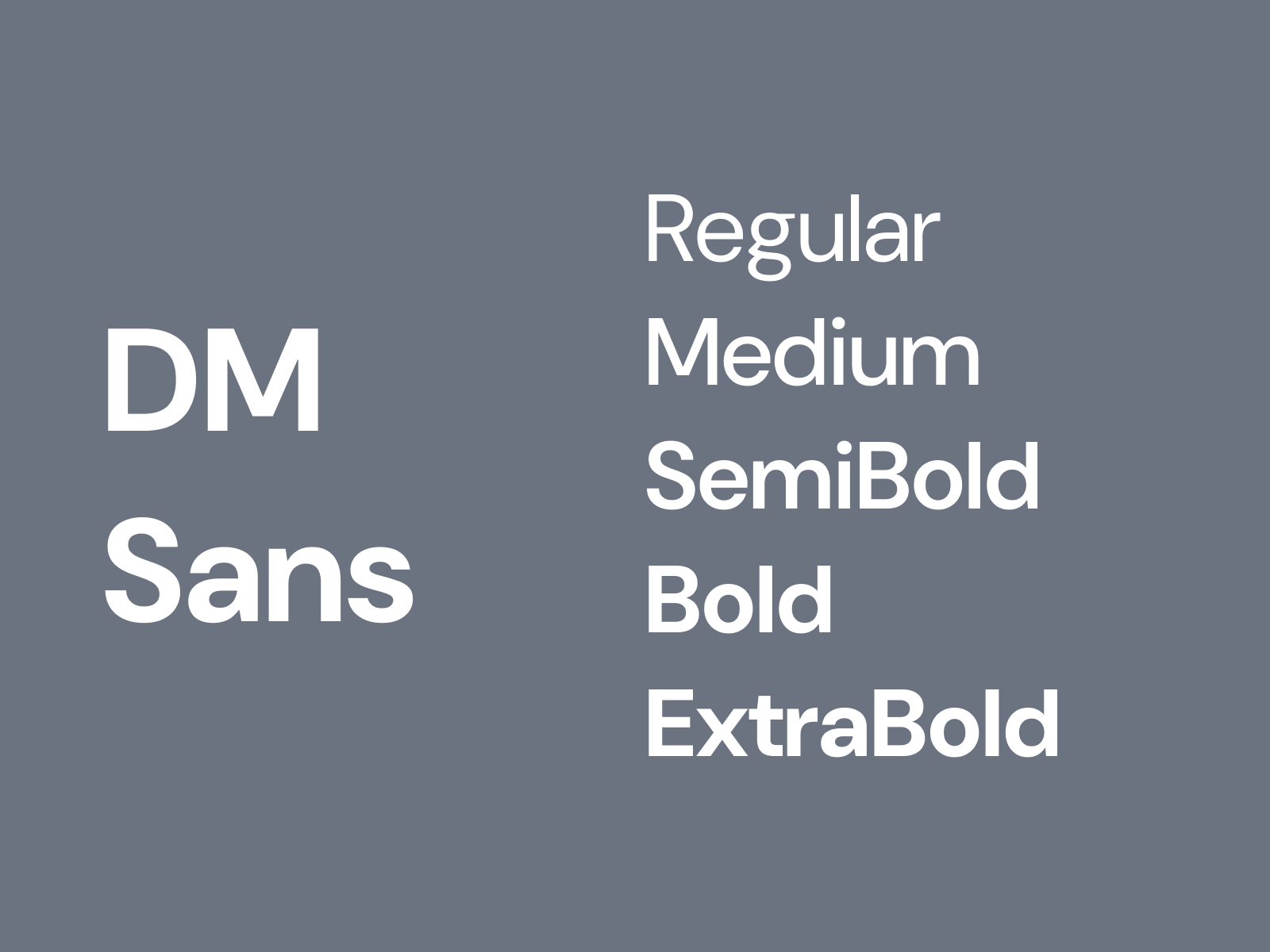
Wireframes
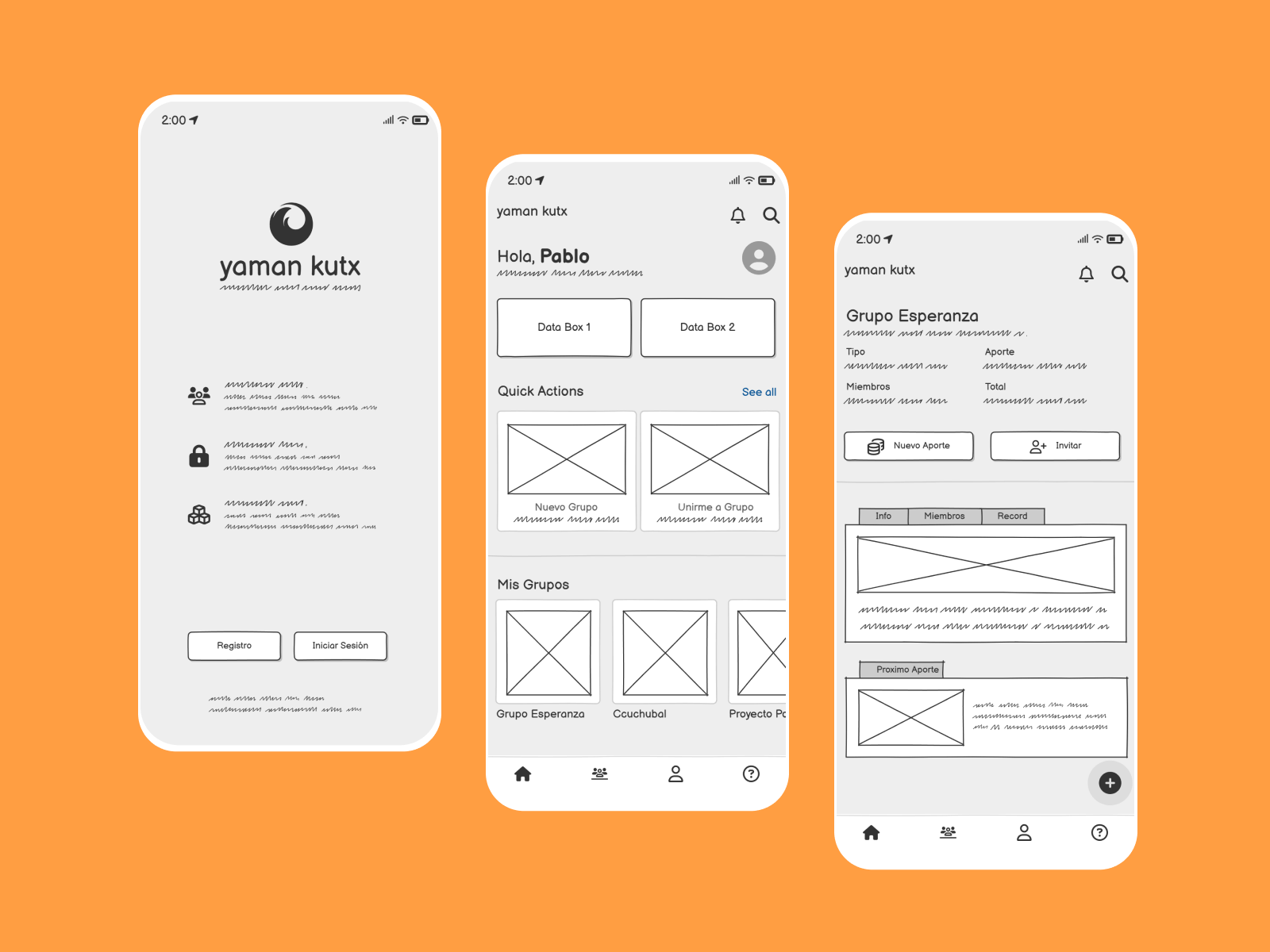
AI-Assisted Visual Exploration
During the UI design process, artificial intelligence was used as a key tool to transform initial wireframes into complete visual proposals. Based on precise instructions, contextual references, and the app’s defined goals, the AI generated graphic explorations that accelerated decision-making and enabled quick visualization of styles, hierarchies, and key components.
This collaboration did not replace design judgment but enhanced it, allowing for agile iterations focused on the real needs of the audience. Below are some of the exercises developed using various AI tools.
Stitch ⭐
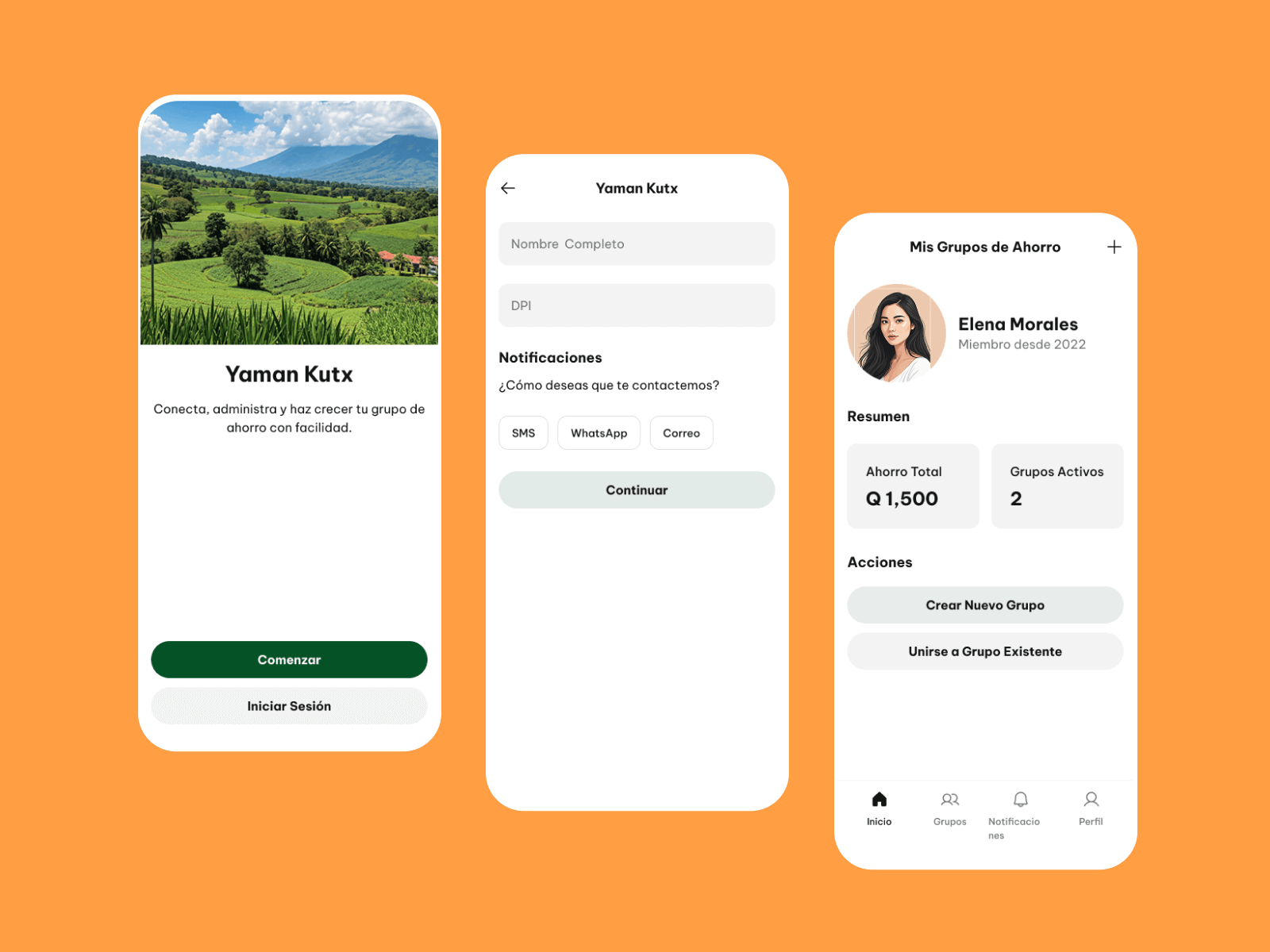
Lovable ⭐⭐
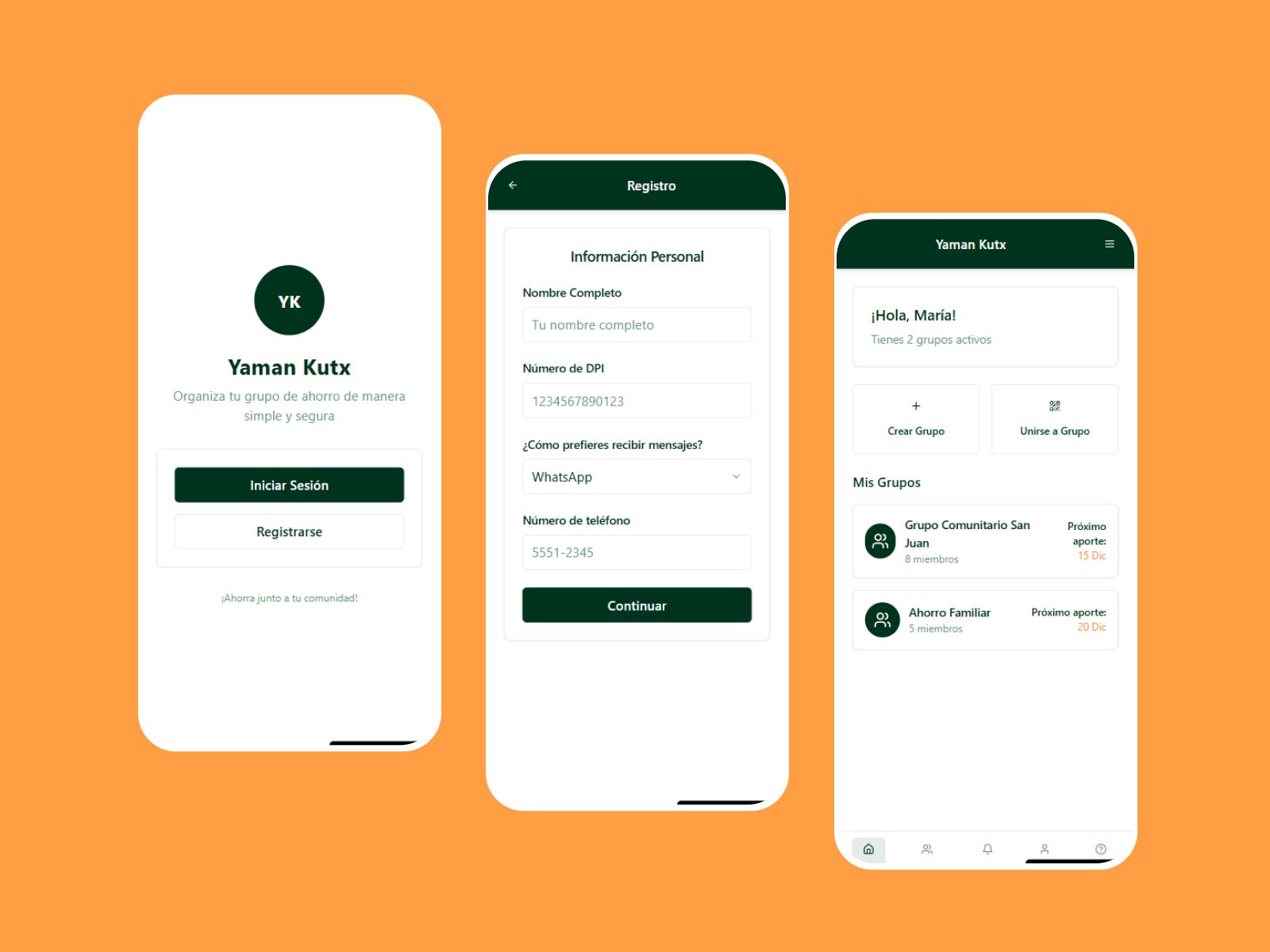
Bolt ⭐⭐⭐
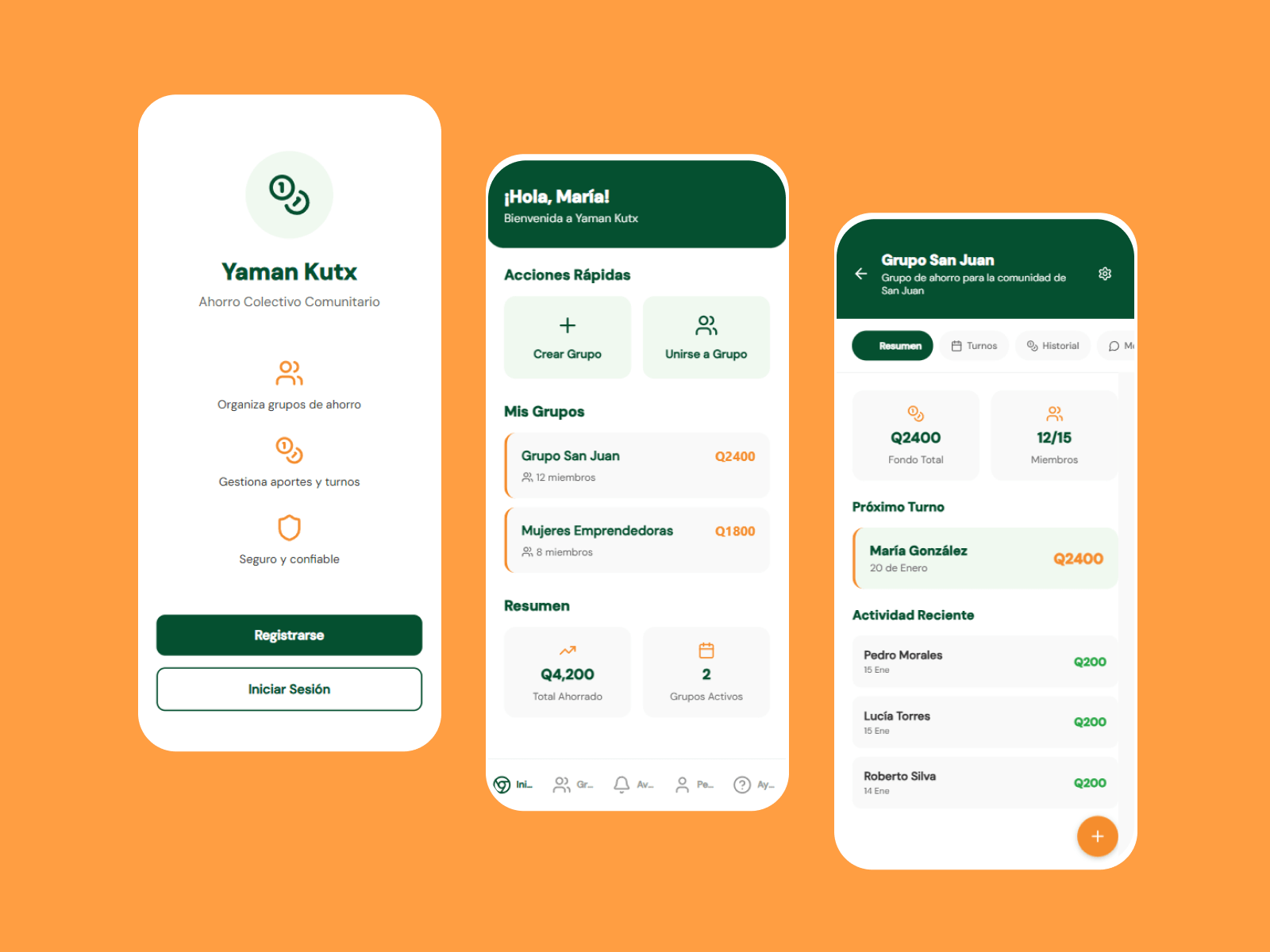
Polymet ⭐⭐⭐⭐
